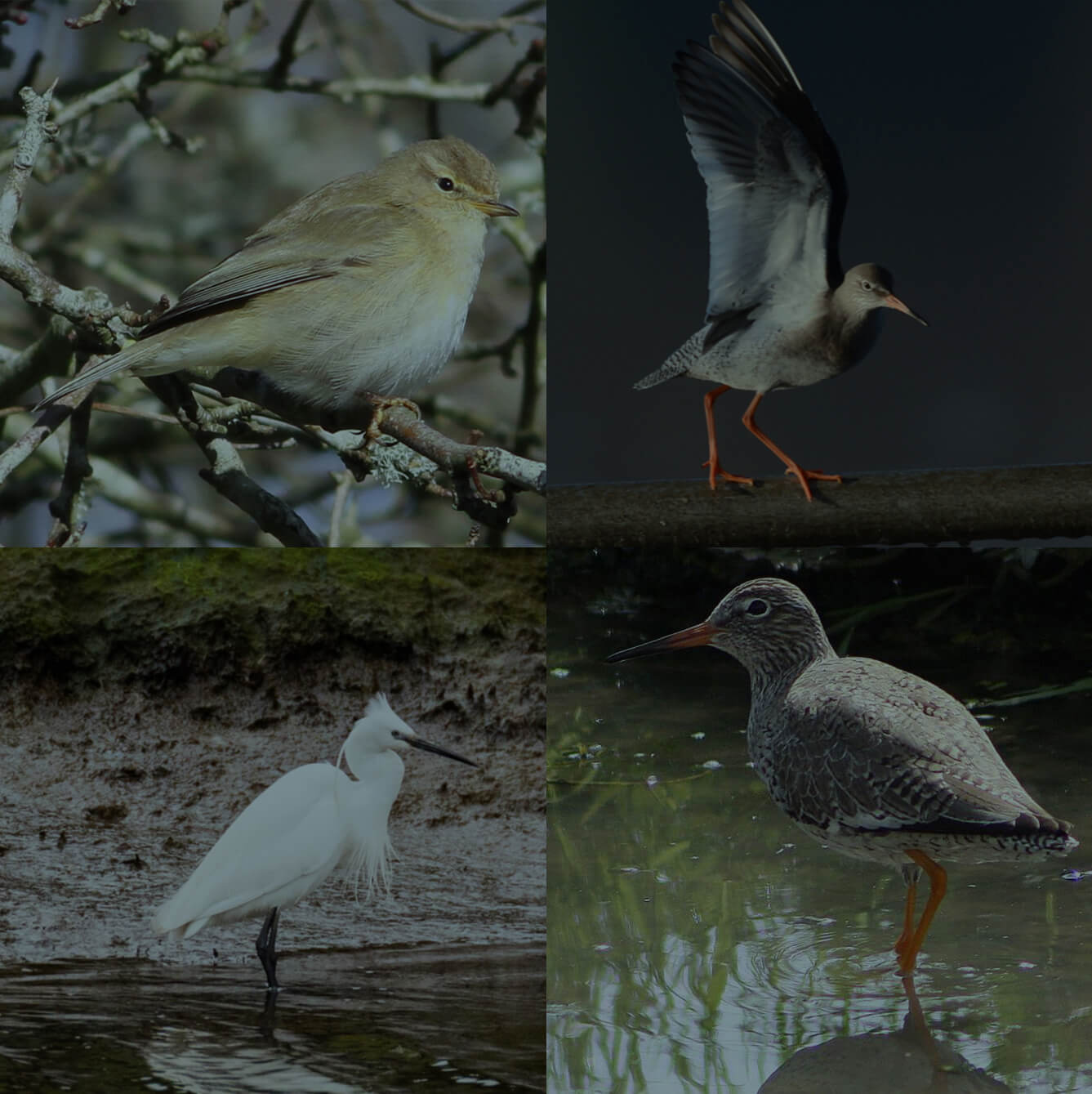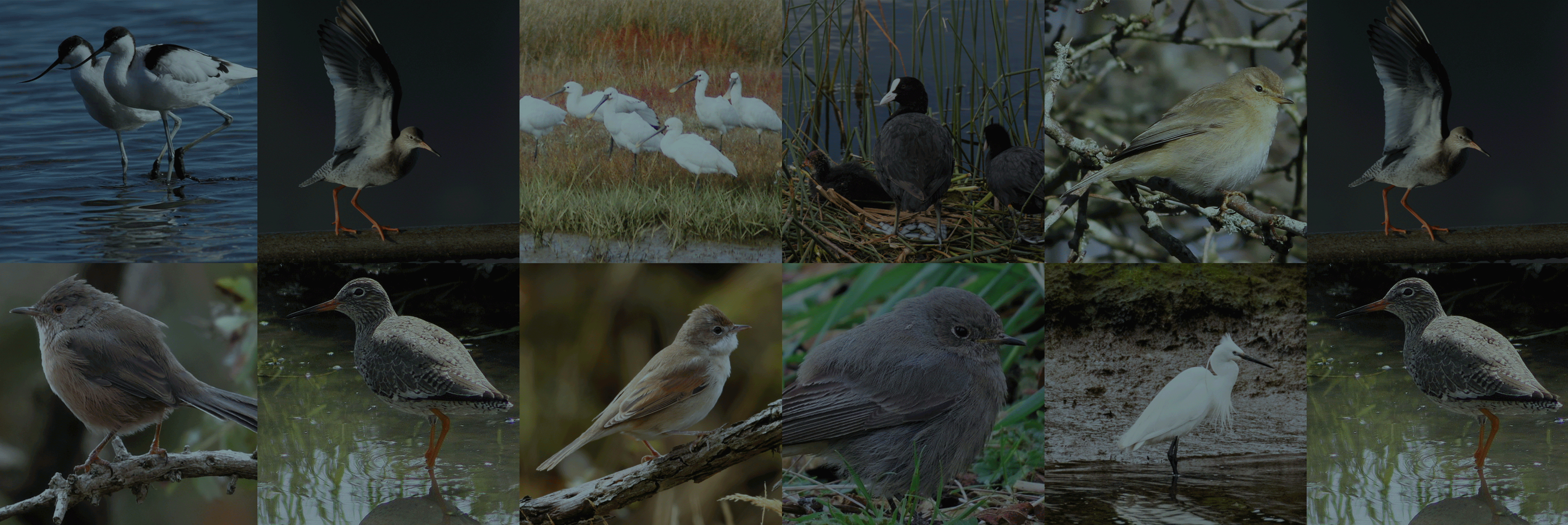An official account of all species that have been recorded and reported by birdwatchers and naturalists in the Poole Harbour area since records began.
The data for this list has been extracted from various sources, but George Greens 'The Birds of Dorset', Mansel-Pleydell's Birds of Dorsetshire, Naylor’s reference manual of rare birds and the back catalogue of Dorset bird reports have provided most information. Data is currently still being researched and records will be updated accordingly.
You can view this information in two different ways. Our alphabetical list provides information on the status of each species within the harbour, finder dates and names, photos and favoured locations. By clicking on the Systematic List button you will be presented the full Poole Harbour systematic list which includes status of species, pending records and historical accounts.
To date, 333 species have occurred and have been accepted within the Birds of Poole Harbour boundaries. A further 11 distinct subspecies have also been seen. In addition, we have two species/subspecies which have been recorded, but are awaiting acceptance by the appropriate records panel.
There are a handful of historical records, for which there is currently insufficient information to allow their inclusion onto the Poole Harbour list, but are believed to be genuine records. They are listed at the end of the list.
Finally, there are a number of feral or escaped species that have been recorded within the Birds of Poole Harbour boundaries. They are included for completeness, but are not included on the Poole Harbour list.
We would be interested in hearing details of any species that do not appeared on this list.
The Birds of Poole Harbour systematic list is a PDF which you can view by clicking on the button below. It was last updated on December 2019.
Full Poole Harbour Systematic List
Pale-bellied Brent Goose
Latin Name
Branta bernicla hrota
Status
Scarce Passage Migrant & Winter Visitor
Site And Records Information
The first record of this taxa was of five in Brands Bay on 28th March 1994. There were two more at Little Sea on the 4th and 5th November 1995 and one at Middlebere on 16th January 1998 . On the 27th Feb 2002 one was found at Middlebere with 200 Dark-bellied Brents with 1 on 27th Feb 2002 at Middlebere with 200 dark-bellied Brent Geese
Since then between 1 and 4 birds are recorded most winters usually to be found in the large flock of Dark-bellied Brent Geese that visit the harbour. There was a high of 6 at Baiter from 14th -24th Jan 2004 and one summered on the Brownsea Lagoon from 18th May until 16th June and was thought to be a sick bird.
This race of Brent Goose is a scarcer relative of our more familiar Dark-bellied Brent Goose. Pale-bellied Brent Geese breed up in Greenland and Alaska.
Recent sightings
2023
First winter period and spring:
Poole Harbour Singles at Brand’s Bay on 20th & 22nd Jan and 15th Feb.
Autumn and second winter period:
Arne RSPB 14 on 26th Nov.
Poole Harbour 5 at Lytchett Bay on 15th & 19th Dec.
Studland Bay 1 on 15th Dec.
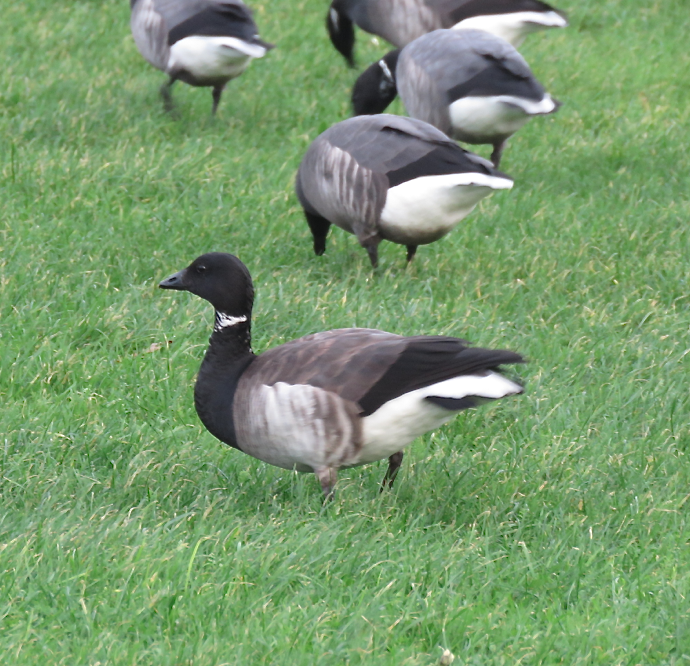
Pallas’s Leaf Warbler
Latin Name
Phylloscopus proregulus
Status
Vagrant
Site And Records Information
You’ll have to wait until late October and there’s no doubt where the best place is to try and see one (Studland), but with only 3 Poole Harbour records Pallas’s Warbler remains a very rare Poole Harbour bird. If only they could become as frequent as Yellow-browed Warblers.
1 on October 25th 1999 at Pilot’s Point, Studland (Mark Constantine)
1 on October 24th – 26th 2007 at South Beach, Studland (Nick Hopper et al)
1 on October 24th 2013 South Beach, Studland (Nick Hopper et al)
Pallas’s Sandgrouse
Latin Name
Syrrhaptes paradoxus
Status
Vagrant
Site And Records Information
Both 1863 and 1888 saw an incredible irruptions of these birds from central Asia. Many thousands occurred in western Europe particularly during 1888. There have only been 6 records in Britain in the last 100 years. The last on Shetland in 1990. There were no Dorset records in 1863 but there were 2 in 1888 and one in Jan 1889. One which was in the harbour…..
6 on 28th May 1888 at Wareham (per Field 09/06/1888)
Pectoral Sandpiper
Latin Name
Calidris melanotos
Status
Vagrant
Site And Records Information
Pectoral Sandpiper is the most regular of the rare American waders that occur in Dorset. With most records occurring in September there is now ample amount of habitat for more to be found with Brownsea Lagoon, Lytchett Fields, Holton Pools and Sunnyside Pools looking like the best sites. To date there have been 10 Poole Harbour records.
1 on 22nd Sep 1935 at Swineham Point (BB:29;217)
1 on 24th Sep1967 at Wareham Sewage Works
1 on 11th Sep1992 at Lytchett Bay (E.Brodie et al)
2 on 20th Sep 1992, 1 remaining until 22nd at Swineham Pools, Swineham (S Morrison)
1 on 14th Sep 2003 at Middlebere (T.Elborn et al)
1 on 17th – 20th Jul 2008 at Swineham GP (K.Lane et al)
1 on 11th Sep 2011 on Arne Moors (P.Morton et al)
1 on 16th Sep 2012 on Brownsea Lagoon (A.Mears)
1 on 3rd-6th Oct 2014 at Lytchett Bay (R.Webb et al)
1 on 10th Sept 2020 on Arne Moors/Swineham ‘Stilt Pools’ (P.Moore) which was later joined by a second on Sept 14th (D.Foster)
1 on 12th – 20th October 2021 at Lytchett Fields (Ian Ballam et al)
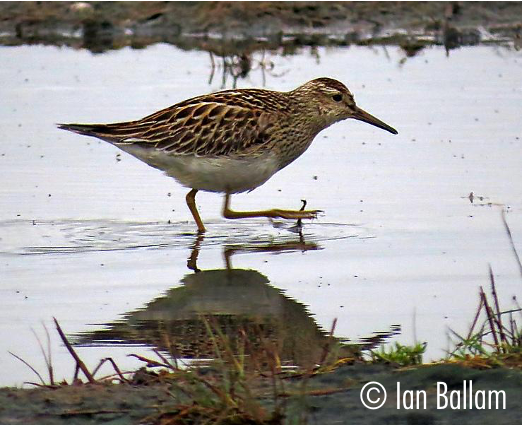
Penduline Tit
Latin Name
Remiz pendulinus
Status
Vagrant
Site And Records Information
There have been 11 Dorset records to the end of 2015 involving 14 individuals. Extreme vagrant to the harbour and all records so far have been in winter.
1 on 10th Jan 1989 at Swineham, seen briefly before it flew off. (P. Williams). 2nd Dorset record.
1 from 20th Jan – 13th Feb 1998 on the Turlin Moor shore at Lytchett Bay (N.Douglas, C.Whitborne et al) photo.
2 on 22nd Nov 2015 flew north east over Lytchett Bay View calling (S.Robson). 4 hours later they were found at Longham Lakes!
Peregrine
Latin Name
Falco peregrinus
Status
Resident
Site And Records Information
Peregrines can be encountered (infrequently) anywhere in the harbour, certainly during winter and even over adjacent urban areas. They are most easily seen in the winter months when there could be half a dozen or more at times as they take advantage of an abundant food source that includes waders, wildfowl and even smaller gulls. They are less obvious during summer but may still visit the harbour on occasions to catch prey which is then taken to feed young in nests on nearby coastal cliffs or in Wareham Forest. Some youngsters from these nests may relocate to the harbour once fledged where they can be heard soliciting loudly for food and even receiving prey items from a parent during early autumn.
The best locations to see Peregrines generally occur where there are the highest densities of prey species such as Brownsea Island, Middlebere, Wareham Channel, Holes Bay, Brands Bay, Lytchett Bay and around the Arne peninsula. They breed on the cliffs at Ballard and in 2020 bred on Corfe Castle which was the first time in 20 years they had bred at this site.
As of spring 2019 a pair have set up residence on the tall section of the Asda building at Holes Bay, but sadly didn’t breed in 2019 or 2020. However in 2021 and 2022 they nested on the Barclays Building which is the first Poole Town nesting since they nested on the old Poole Power station in 1986.
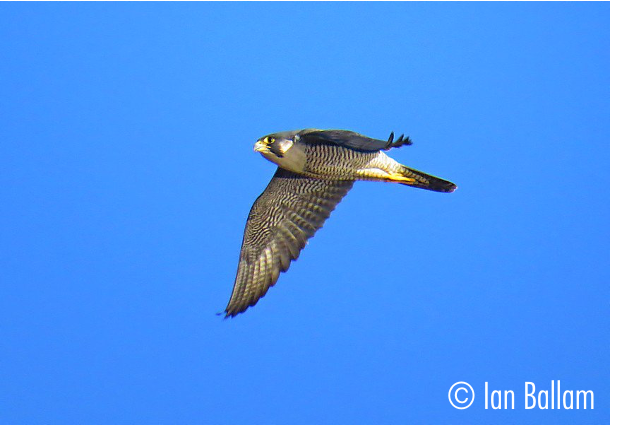
Pheasant
Latin Name
Phasianus colchicus
Status
Resident
Site And Records Information
A bird of utmost controversy. Breeds in most rural habitats around the harbour and is still released annually as game for shooting. Each autumn up to 50 million pheasant are released into the UK with no true knowledge of the scale of impact it has on our native wildlife. As pretty as Common Pheasant are its surely time to start learning about the the true scale of disruption these birds have on our native wildlife. Pheasant rearing started in the harbour on Brownsea around 1750 and was quite intensive between about 1870 and 1914 with over 2000 being raised for the then owner Charles van Raaltes shooting parties. “Rearing stopped in 1925 and since that date the Pheasants have survived as completely wild birds on Brownsea” stated Tony Wise.
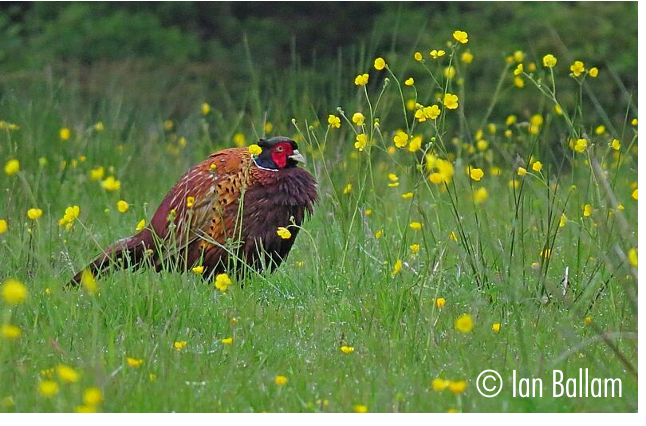
Pied Flycatcher
Latin Name
Ficedula hypoleuca
Status
Passage Migrant
Site And Records Information
Can realistically turn up anywhere with suitable habitat, but Studland and Ballard have had noteworthy counts in Spring. Autumn passage is stronger from early August to mid September with Arne, Ridge, Middlebere, Fleets Corner, Studland, Ballard, Swineham, Corfe and even 3 in a small Parkstone garden in August 2004.
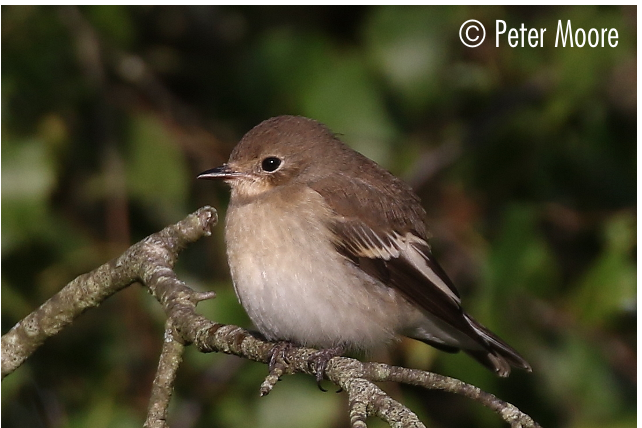
Pied Wagtail
Latin Name
Motacilla alba
Status
Resident
Site And Records Information
Breeds throughout the whole harbour but more obvious in autumn and winter when large flocks congregate to roost in Poole Town Centre, Poole Park and other urban sites around the harbour. Also roosts in the reed beds around the harbour such as Lytchett Bay and Swineham. In October 2012 up to 500 were coming into roost at Lytchett Bay. Also often running down Poole High Street ahead of busy walkers feet as they look for crumbs in the street cracks. Also recorded in Poole Harbour each year is the continental sub-species White Wagtail.
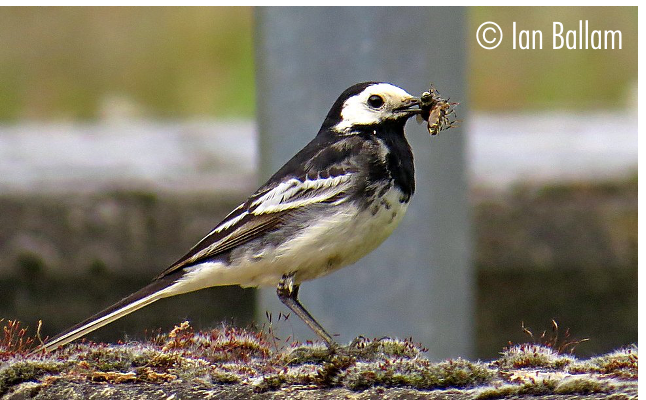
Pied-billed Grebe
Latin Name
Podilymbus podiceps
Status
Vagrant
Site And Records Information
An exceptional Poole Harbour record of 1 from the 10th February – 24th May 1980 on Little Sea, Studland from the triangle hide. Ian Prophet, down from Bristol on the 10th Feb 1980 for a day called in to the triangular hide at Studland around 15.00 in the afternoon and was shocked to see a Pied -billed Grebe coming out of the reeds. Calling Mick Rogers, the observatory warden at Portland, to spread the news it materialised that it was the same bird that had been at Radipole in Januray of the same year. It was in winter plumage when it arrived but attained full breeding plumage during its stay. It was frequently seen displaying and heard calling. At the time it was a 1st for Dorset and only the 7th for Britain and Ireland.
Pink-footed Goose
Latin Name
Anser brachyrhynchus
Status
Rare Winter Visitor
Site And Records Information
Whilst this species might be abundant in Norfolk (70,000+), it is very rare in Dorset (12 records in the whole county between 1950 and 1979!). Despite having been seen in several locations it seems the Frome Valley and Holmebridge have been favourite sites in recent years.
5 on 17th Dec 1961 at Brands Bay
24 on 29th Dec 1981 over Lytchett Bay (P. Harvey). These birds had previously been seen on the Stour at Merley.
75 from 17th Jan 1982 to early Mar at Arne/Wareham Water Meadows was unprecedented cold weather influx unlike anything noted before or since.
1 on 7th Nov 1993 at Hatch Pond
2 from the 31st Jan – 2nd Feb 2000 at Middlebere (G.J.Armstrong)
3 on 23rd Dec 2003 at Middlebere (C.Cottrell)
1 on 24th Dec 2007 at Keysworth (G.J.Armstrong) with 17 White-fronted Geese.
1 from 14th – 19th Jan 2008 at Swineham (G.J.Armstrong, J.A.Lidster et al), presumed same as above.
1 from 21st Dec 2012 – 30th Jan 2013 at East Holme (S.W.Smith et al)
1 on 6th Oct 2016 over Hatch Pond was adjudicated by DRP as being either this species or Tundra Bean Goose.
1 on 9th-10th October 2017 at East Holme (N.Hopper)
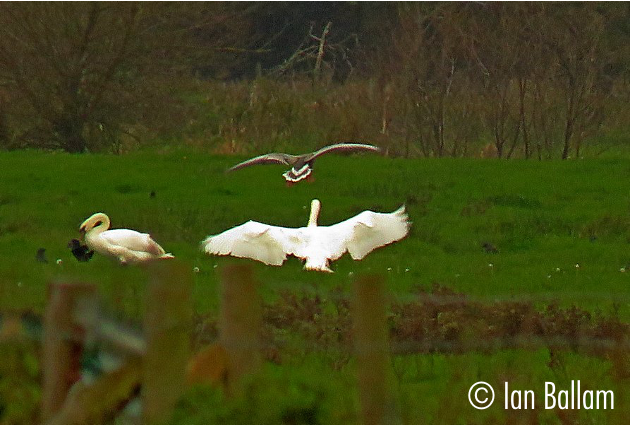
Pintail
Latin Name
Anas acuta
Status
Winter Visitor
Site And Records Information
Nationally important numbers of Pintail visit Poole Harbour in winter and half the counties birds winter here too. They used to commute high in the sky from Little Sea where they spent much of the time, to feed in Newtons and Brands Bay and seemed to have developed a strategy that has avoided shooters. But sadly almost none use Little Sea each winter now, just like all other duck species, they abandoned this once popular winter-duck hotspot.
This population seems to have been fairly constant for the past fifty years and Pintail have bred in the harbour once, in 1983 where they raised 3 young. This is the only confirmed breeding record for Dorset. There are several instances of summering, notably during the 1980s. The earliest record is for 24th August 1972 and the latest 26th April 1995 with a maximum harbour count of 525 on 17th January 1971 which is the best month to see them.
Today, Arne Bay and Holes Bay NW (the Stone Bench) offer the best viewing opportunities of this stunning, sleek winter visitor. The average 5-year winter total population is 263 per winter.
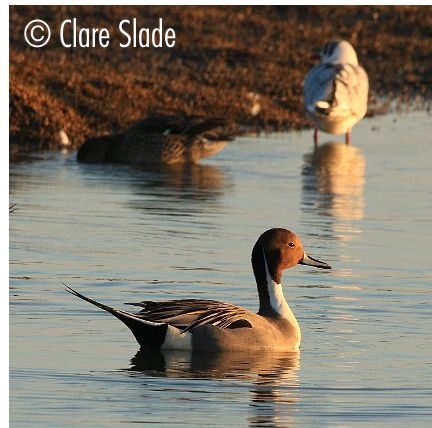
Pochard
Latin Name
Aythya ferina
Status
Winter Visitor (now in very small numbers)
Site And Records Information
A sad story of a once abundant winter duck. The recent national decline has seen a 60% drop in over-wintering populations, but sadly here in the harbour it’s considerably more. The majority of the wintering population were at Little Sea with smaller numbers also at Brownsea and Poole Park. Numbers increased over a sixty year period averaging around 600 each winter with 523 in January 2002 and a huge maximum of 2801 on the 17th February 1963.
The threshold for Pochard is 440 birds which made Poole Harbour a site of national importance as a wintering area for this species.
However, mirroring the UK decline, Poole Harbour is now largely a Pochard ‘no-go’ zone with the current 5-year wintering average maxing at just 10 birds per winter. And even that number is dropping with just 4 over-wintering at Swineham GP during the 2019/20 winter period.
Breeding occurred annually in Poole Harbour for several years from 1876 and 30 young were hatched near Wareham in June 1877”-Mansel-Pleydell (1888). While there have been no recent breeding records, Pochard does breed elsewhere in the county and could breed in the harbour where habitat is suitable.
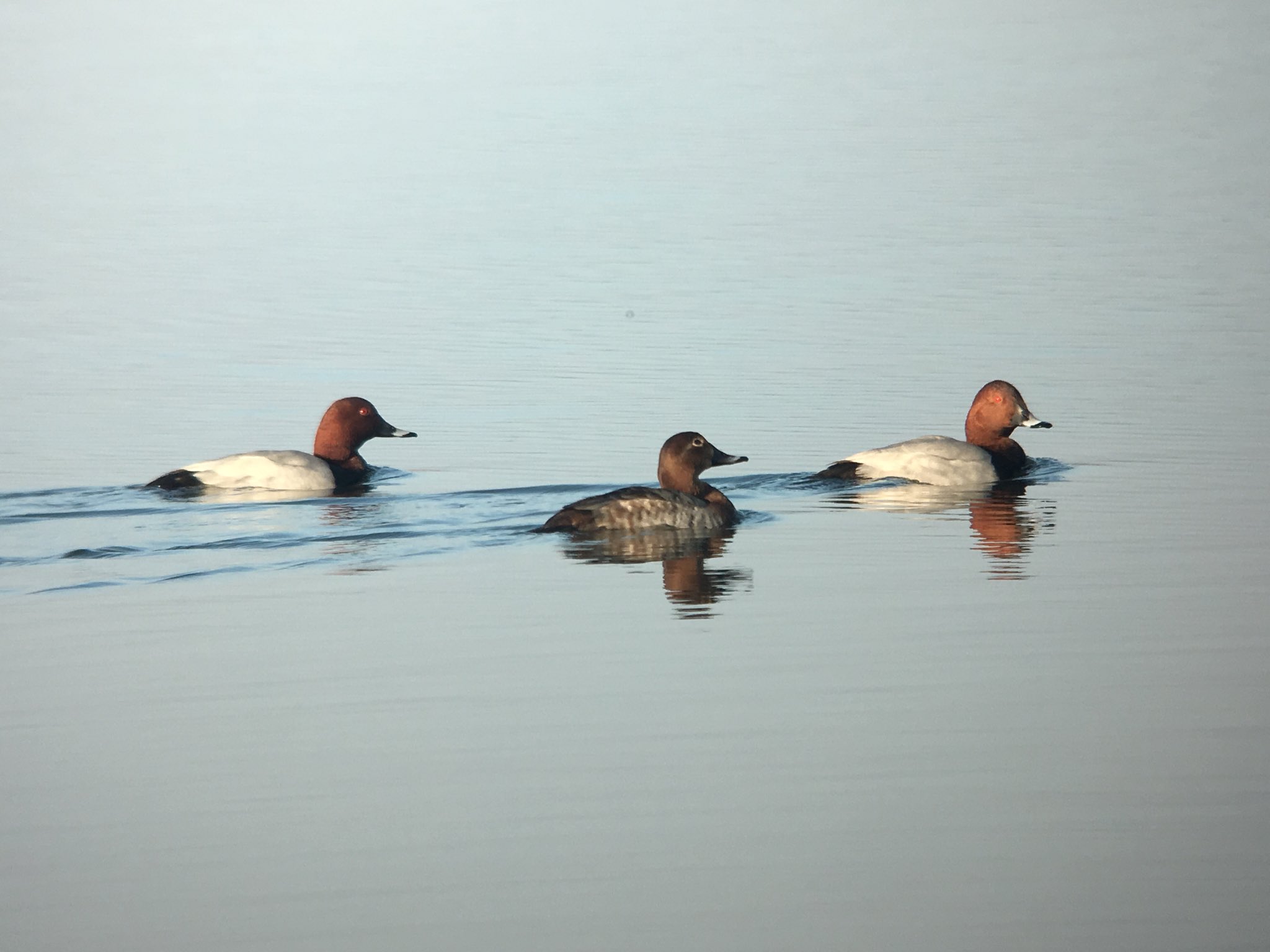
Pomarine Skua
Latin Name
Stercorarius pomarinus
Status
Scarce Passage Migrant & Winter Visitor
Site And Records Information
A sea watch from Branksome or any of the Studland beaches during May or Oct/Nov with a strong on-shore wind offers the best chance.
H G Alexander who retired to Swanage in part for the seawatching was the first to find an adult Pomarine Skua in Studland Bay on 17th October 1961. He also found the next one in Shell Bay chasing terns on 28th May 1963. One of the most enviable sightings was made by Len Howells , when he flushed it from the beach in Shell Bay on 2nd May 1970 and enjoyed sparkling views. No doubt in just reward for all the bird counts he had done and the hides he had made at studland. Other historic records include 27th September 1982 off Canford cliffs and 2nd October 1983 at Arne.
Another flew out of Poole Harbour entrance on 11th September 1986 and was seen again in Studland Bay on 14th September, and two flew south in Studland Bay on 18th October 1987, following the Great Storm.
That said the best record occurred on a dry sunny evening when 6 adults were found sat on the sea on 26th May 2002 off Branksome Chine (I.M.Stanley, J.A.Lidster, N.Hopper). 5 took off and flew inland along the Corfe Ridge, reaching great height before being lost to view.
Recent Records
2014
Branksome Chine – 2 on the 16th October
2016
Branksome Chine 2 on 6th Oct, 1 on 6th Nov, 4 on 8th Nov.
2017
Ballard Down 2 on 30th Apr.
Branksome Chine 1 on 30th Apr, 1 on 15th May.
Poole 1 W from Shore Road beach huts, Sandbanks, on 15th May.
2021
1 from Alum Chine 24th April
Puffin
Latin Name
Fratercula arctica
Status
Vagrant
Site And Records Information
Vagrant to the harbour and only 3-4 pairs breeding in Dorset at Dancing Ledge. Probably the most sought after ‘common’ bird in Poole Harbour with only about five records since records began. Most records involve birds shot in Poole Bay during 1800’s or birds found dead on Studland beach during the 1960’s. It was also stated that Puffin were once common place on the cliffs of Studland and Old Harry where around 300 could be knocked off the cliffs with a stick in a single morning!
There is only one record in recent times.
1 on 12th Feb 2014 at Branksome Chine (G.J.Armstrong). This bird occurred following very stormy weather in the western approaches which also produced c35 birds around the same time along the Dorset coast. Many of these were already dead or exhausted.
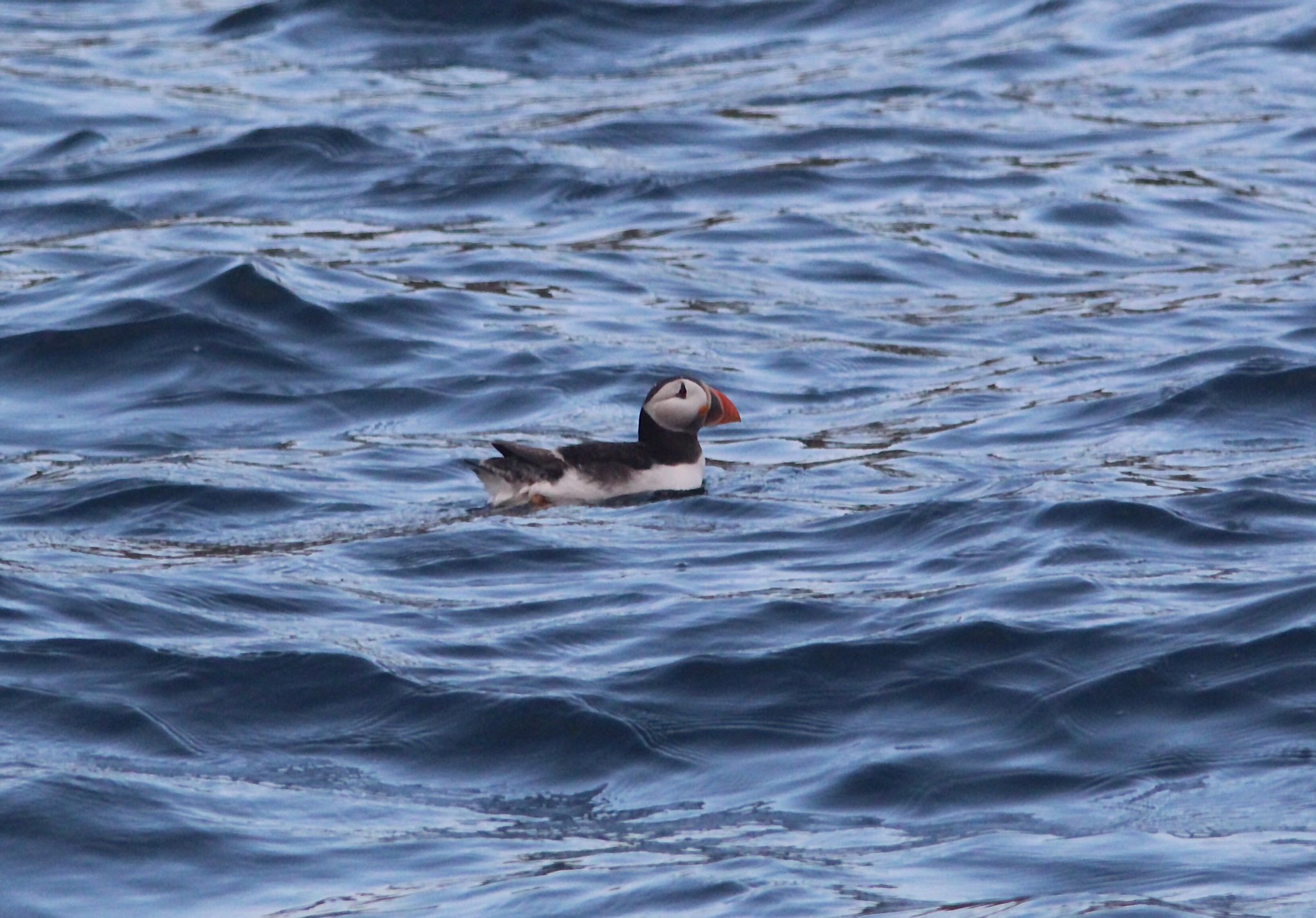
Purple Heron
Latin Name
Ardea purpurea
Status
Vagrant
Site And Records Information
A rare bird with only 6 records in the harbour, the most bizarre being one at Hatch Pond in 1999 for three days. It can’t be that often that a rare southern European heron turns up on an industrial estate pond in the centre of town. The long-staying bird at Little Sea in 2018 was another well watched bird too. There’s a historical record from Van Rallte of one found along the sea wall on Brownsea in 1890.
A second summer from 8th – 15th April 1992 at Lytchett Bay (Graham Armstrong et al)
An adult on July 24th 1994 at Lytchett Bay 0 (E.Brodie)
A juvenile from the 27th August – 29th September 1999 at Hatch Pond (George Dunquin et al)
Little Sea, Studland An imm between 16th-23rd Jul 2018 and between 1st Aug and 1st Sep (SW Smith et al). This bird was almost exclusively seen in the evening coming into the egret/heron roost, but was reliable enough for most people who wished to see it to at least catch a glimpse. The first in the county since 2015.
1 in flight over Bog Lane, Stoborough on 20th Apr 2020 (Durwyn Liley).
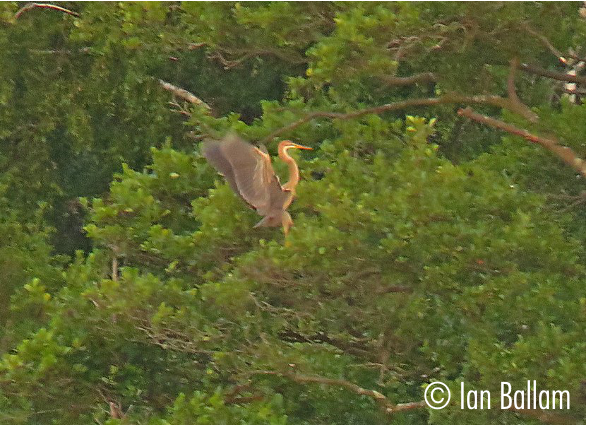
Purple Sandpiper
Latin Name
Calidris maritima
Status
Winter Visitor
Site And Records Information
The maximum count is 11 in Feb 2008, Nov 2009, Jan 2010 and Jan 2011. Other interesting records include: 7 at Poole Quay on 8th Jan 1983; 8 at Arne on 8th Nov 1984; 3 at Hamworthy beach on 17th Mar 1996; After high winds, one walking along the road towards Swan Lake in Poole Park on 18th Jan 1987; 1 on Brownsea on 31st Oct 2012;
Birds are sometimes seen passing Branksome chine as they, interchange with nearby birds along the coast at Hengistbury Head.
Earliest record is 1 at Arne on 23rd Aug 1966 and the latest is 1e at Branksome Chine on 28th Apr 2003. One was even found on a pavement in Poole Park one winter during a a particularly bad rain storm.
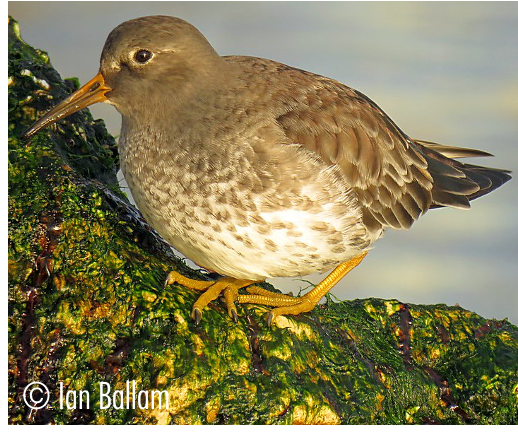
Call 01202 641 003
© 2025 Birds of Poole Harbour Registered Charity No. 1152615

